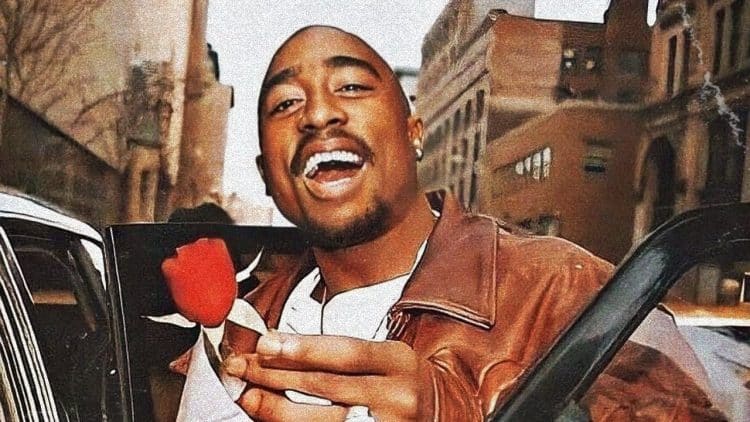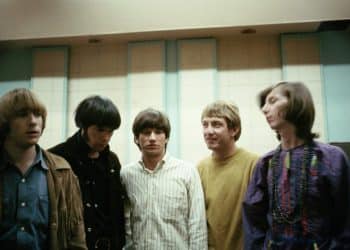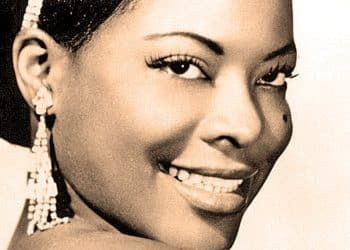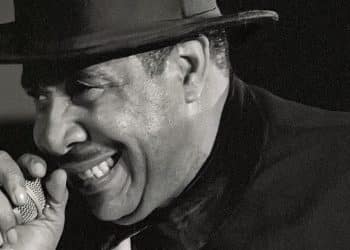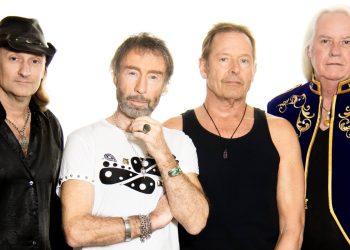Tupac Shakur, better known as 2Pac, remains one of the most iconic and influential figures in hip-hop history. With a career that spanned just a few short years, his music transcended the boundaries of rap, delivering raw emotion, poetic storytelling, and searing social commentary that continues to resonate with fans worldwide. From anthems of empowerment to introspective reflections on life and death, 2Pac’s catalog is a testament to his genius as both an artist and a voice of his generation. Whether he was celebrating the West Coast lifestyle, addressing systemic injustice, or pouring his heart into personal tributes, every track he touched carried an unmistakable sense of passion and authenticity.
In this article, we’ll explore the top 10 most popular 2Pac songs of all time—the tracks that defined his legacy, shaped the sound of hip-hop, and cemented his place as a cultural icon. These songs have stood the test of time, continuing to inspire and move listeners decades after their release. So, whether you’re a lifelong fan or new to the legendary rapper’s work, join us as we dive into the unforgettable music that made 2Pac an immortal force in the world of rap. Get ready to relive the brilliance of a true hip-hop legend!
1. “California Love” (1995)
When “California Love” dropped in December 1995, it immediately captured the essence of West Coast hip-hop and became a defining moment in 2Pac’s career. Featuring Dr. Dre and the late Roger Troutman, the track is a vibrant celebration of California’s culture—its sunny vibes, party scenes, and laid-back lifestyle. With a funky G-funk beat and Troutman’s iconic talk-box vocals, the song blends smooth production with Tupac’s unmistakable presence. His voice, full of charisma and confidence, meshes perfectly with Dre’s polished sound, making the song both a dancefloor anthem and a cultural statement. The timing of the release also marked a significant chapter in Tupac’s life, as it came right after his release from prison, signaling his triumphant return to the music scene. Not just a hit, “California Love” became a global phenomenon, embodying the spirit of the West Coast and solidifying Tupac’s place in the hip-hop pantheon. The Mad Max-inspired music video further amplified its status, adding to its legendary reputation in the genre.
2. “Changes” (1998)
Released posthumously in 1998, “Changes” is one of Tupac’s most reflective and socially conscious tracks. Sampling Bruce Hornsby’s “The Way It Is,” the song serves as a powerful commentary on the struggles of racial inequality, police brutality, and systemic oppression. Tupac’s lyrics, raw and unapologetically honest, offer a poignant snapshot of the issues that plagued society during his time—and continue to affect it today. His famous line, “I see no changes, all I see is racist faces,” cuts deep, speaking to the frustrations that many still face in the fight for justice. The song’s melancholic yet hopeful tone resonates through the years, proving that Tupac’s message was ahead of its time and continues to hold relevance. As a protest anthem, “Changes” remains one of the most profound songs in hip-hop, demonstrating Tupac’s unique ability to channel personal struggles into broader societal issues.
3. “Dear Mama” (1995)
In February 1995, Tupac released “Dear Mama,” a deeply emotional tribute to his mother, Afeni Shakur. The track explores the complexities of their relationship, marked by hardship, poverty, and her struggles with addiction. Yet, it is also a heartfelt celebration of her unwavering love and sacrifices. Over a soulful beat that samples The Spinners’ “Sadie,” Tupac opens up about the challenges they both faced, while acknowledging his mother’s strength and resilience. The song stands as one of Tupac’s most personal and vulnerable tracks, offering fans a rare glimpse into his softer side. Lines like, “You are appreciated,” and his acknowledgment of her determination to raise him right, showcase a man who, despite his tough exterior, is deeply grateful. “Dear Mama” became an anthem for anyone who has experienced hardship but also benefited from the unconditional love of a parent. Its raw honesty and powerful storytelling make it one of Tupac’s most universally beloved songs.
4. “Hit ‘Em Up” (1996)
Released in June 1996, “Hit ‘Em Up” is undoubtedly one of the most notorious diss tracks in hip-hop history. Over an aggressive beat, Tupac goes full throttle, targeting his rivals, especially The Notorious B.I.G., and anyone associated with his perceived enemies. With the help of the Outlawz, Tupac’s fiery delivery and scathing lyrics fueled the East Coast-West Coast rivalry that dominated the 90s. The track’s explicit content and venomous tone make it impossible to ignore, showcasing Tupac’s ability to harness raw emotion and turn it into an anthem of defiance. The intensity of his delivery, paired with his personal grievances, gives “Hit ‘Em Up” an unmatched level of aggression and energy. Controversial yet undeniably impactful, the track remains a defining moment in rap history, cementing Tupac’s place as a figure who could not be easily dismissed, both as a musical force and as a central figure in the culture wars of his time.
5. “Keep Ya Head Up” (1993)
Released in October 1993, “Keep Ya Head Up” stands out as one of Tupac’s most uplifting and compassionate songs. Built around a soulful sample of Zapp’s “Be Alright” and The Five Stairsteps’ classic “O-o-h Child,” the track addresses the struggles of poverty, misogyny, and systemic oppression, particularly toward women. Tupac’s empathetic tone shines as he calls for respect and equality, with lyrics like, “And since we all came from a woman, got our name from a woman, and our game from a woman.” The song serves as a powerful reminder of the strength and resilience of women, encouraging them to rise above life’s challenges. At its core, “Keep Ya Head Up” is a message of hope, empowerment, and solidarity, making it an anthem for anyone enduring adversity. Its soulful production and Tupac’s heartfelt delivery ensure its place as one of his most enduring and impactful songs, resonating across generations.
6. “Hail Mary” (1996)
“Hail Mary,” released in November 1996 on The Don Killuminati: The 7 Day Theory, is one of Tupac’s most haunting and introspective songs. Released under his Makaveli alias, it explores dark themes of spirituality, vengeance, and mortality. The eerie production, featuring minimalist piano and chilling background vocals, perfectly matches Tupac’s reflective yet menacing lyrics. The song feels like both a prayer and a warning, as Tupac delves into questions of life, death, and the consequences of his choices. “Hail Mary” captures Tupac at his most introspective, blending his vulnerability with a sense of impending doom. This track stands as one of Tupac’s most complex and thought-provoking pieces, showcasing his ability to weave layers of meaning into his music. With its atmospheric production and chilling tone, “Hail Mary” lingers long after the track ends, cementing its place as one of the most impactful songs in Tupac’s catalog.
7. “2 of Amerikaz Most Wanted” (1996)
Released in May 1996, “2 of Amerikaz Most Wanted” is a standout collaboration between Tupac and Snoop Dogg. The track’s upbeat, G-funk production is a far cry from some of Tupac’s more intense tracks, but it’s no less significant. The chemistry between Tupac and Snoop is undeniable, with both artists boasting about their success and survival in the rap game. The track is playful yet assertive, filled with confidence and swagger. It’s a celebration of their dominance, not just in hip-hop, but in the cultural landscape at large. The infectious hook and laid-back production make it a fan favorite, while the music video, featuring courtroom dramatics, adds an extra layer of fun and flair to the song. “2 of Amerikaz Most Wanted” became an anthem of survival, success, and the power of friendship between two of hip-hop’s biggest stars.
8. “Ambitionz Az a Ridah” (1996)
Kicking off Tupac’s All Eyez on Me album, “Ambitionz Az a Ridah” is a high-energy anthem that sets the tone for the entire project. Released in February 1996, the track features a hard-hitting beat, with Daz Dillinger’s hypnotic piano loop providing the perfect backdrop for Tupac’s commanding verses. The song exudes confidence, with Tupac’s lyrics reflecting his unyielding spirit and determination. After his release from prison, “Ambitionz Az a Ridah” became a declaration of Tupac’s resilience and his commitment to his “Thug Life” philosophy. The track is bold, unapologetic, and packed with attitude, making it one of Tupac’s most iconic anthems. With its relentless energy and fierce delivery, it became a staple of Tupac’s musical persona, symbolizing his fight against adversity and his refusal to back down.
9. “Life Goes On” (1996)
“Life Goes On,” from All Eyez on Me, is a reflective track that meditates on loss, death, and the inevitability of moving forward. Released in February 1996, Tupac uses the song to pay tribute to friends who have passed away, while contemplating his own mortality. The production, soulful and introspective, sets the perfect tone for the track’s somber lyrics. Tupac’s contemplative delivery and emotional honesty create a deeply moving experience for the listener, reminding us that life, despite its hardships, must go on. “Life Goes On” balances the celebration of life with a poignant reminder of its fragility, offering a rare glimpse into Tupac’s vulnerability. It’s a song that resonates with anyone who has experienced loss or struggles, making it a timeless anthem of resilience and reflection.
10. “I Get Around” (1993)
Released in June 1993, “I Get Around” is Tupac’s playful and flirtatious party anthem. The track features guest appearances from Digital Underground’s Shock G and Money-B, and it quickly became a summer favorite. With its funky, upbeat production, the song is a far cry from Tupac’s more serious material, showcasing his versatility as an artist. The playful verses and catchy hook made it a hit on dancefloors, and Tupac’s charisma shines through, as he effortlessly delivers lines that are lighthearted and full of charm. “I Get Around” is an upbeat celebration of fun and freedom, reminding fans that Tupac was not just the serious, socially-conscious figure he’s often remembered as. This track is a reminder of his ability to make feel-good music that resonated with a wide audience, cementing his place as one of hip-hop’s most multifaceted artists.
